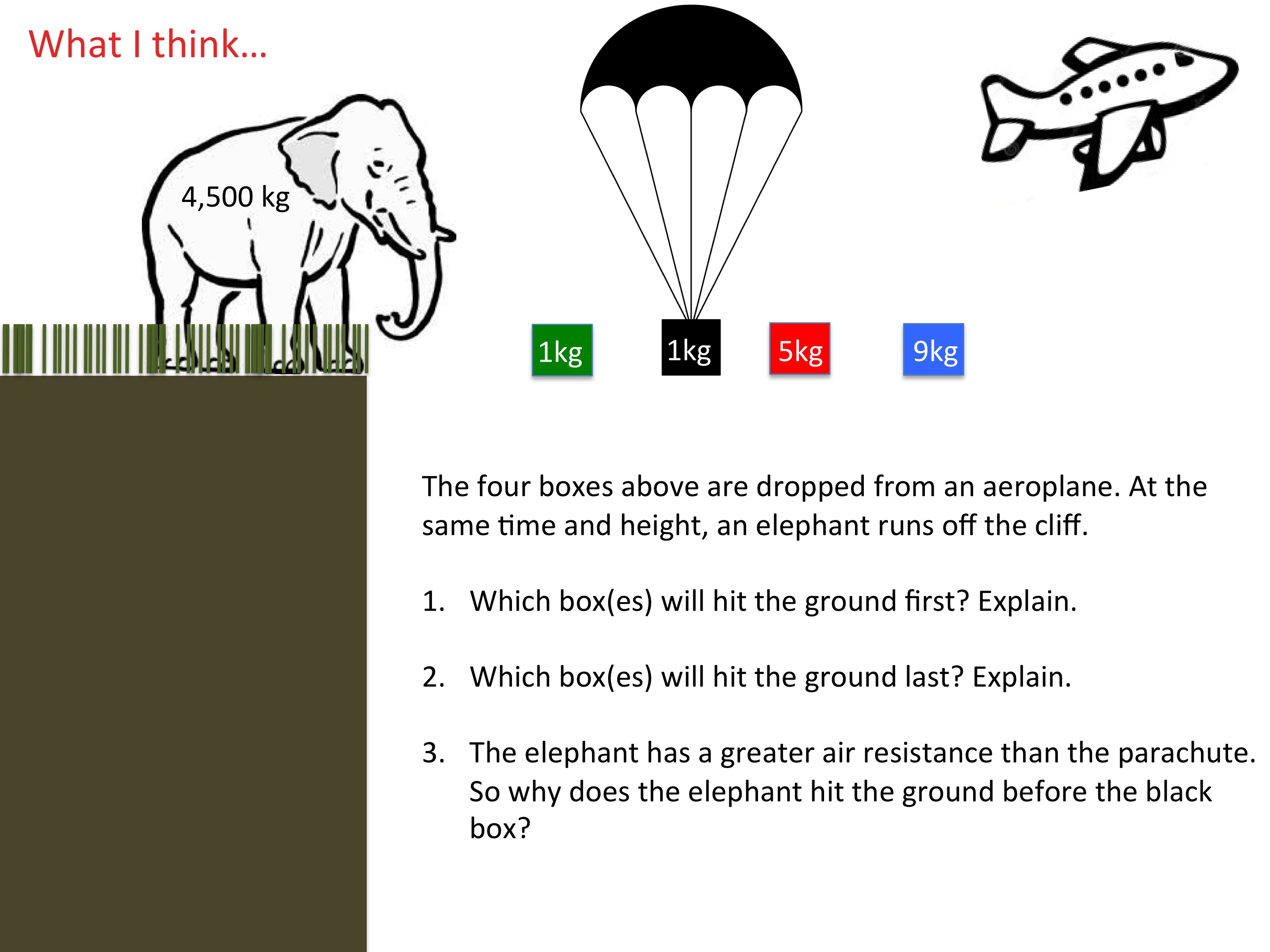Weight, gravity and free fall
Worksheets and lesson ideas to challenge students aged 11 to 16 to think hard about weight and gravity (GCSE and Key Stage 3)
Why do bullets dropped and fired horizontally from the same height reach the ground at the same time? I suppose much of the confusion stems from the logical, but incorrect, assumption that the bullet fired from the gun has a force pushing it along. When you accept that the only significant force acting on both bullets is gravity, the conclusion makes much more sense. Both bullets have the same vertical acceleration g; the horizontal motion of the bullet from the gun is irrelevant. This problem is a fantastic way to get students thinking about free fall and g.
Teaching resources
The difference between weight and mass
GCSE and Key Stage 3 demonstration to get students thinking about the difference between weight and mass. This is an excellent video from Eureka that explains the difference between weight and mass.
Gravity as a force of attraction
Key Stage 3 thinking task about gravity and why we don’t fall off the world. Students are asked: Why we don’t fall off the world? It leads to discussions about the concepts of weight and gravity. You can take thinking further by asking students if there is such as thing as up and down in space. (PDF)
Explaining free fall and gravity – Key Stage 3 (11-14)
Key stage 3 demonstration and teacher talk to explain free fall and gravity. This activity takes you through a possible demonstration and explanation to explain why objects fall towards the Earth. (PDF)
Explaining free fall – GCSE (14-16)
This commentary will help explain free fall to students. The explanations will hopefully help you explain 1) why heavy objects do not fall faster than lighter objects and 2) why a feather hits the ground after a bowling ball despite having less air resistance. Many students commonly believe that heavy objects fall faster than lighter objects and that feathers have a large air resistance – hence fall to the ground last. Instead it’s all about acceleration and the overall force acting on the object. (PDF)
Free falling objects and acceleration
GCSE thinking task about weight, air resistance and acceleration due to gravity. Students predict which object will hit the ground first. This thinking task identifies prior knowledge and gives students important information so they can adapt their thinking. (PDF on weight, air resistance and acceleration).

